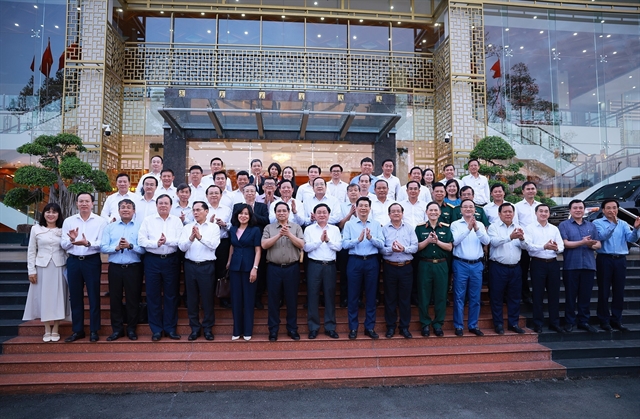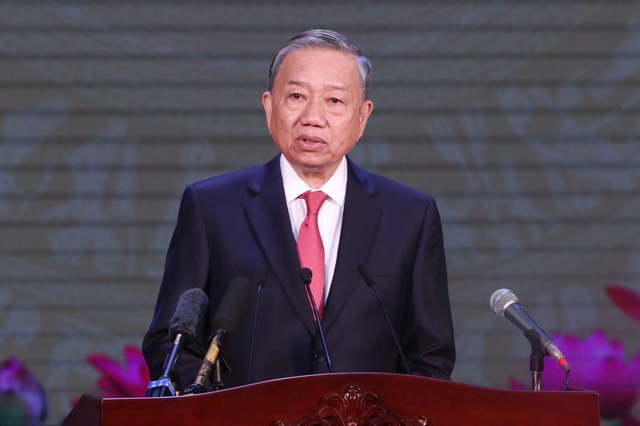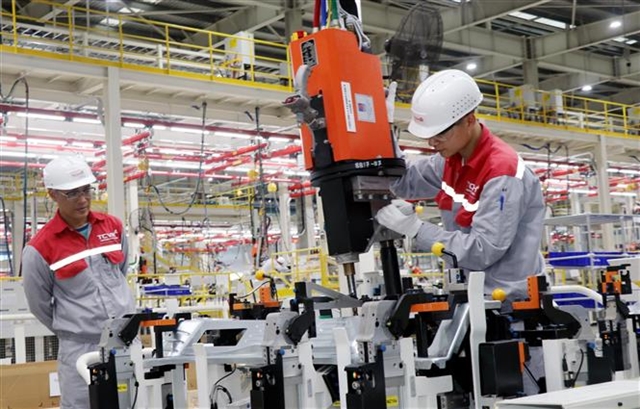 Politics & Law
Politics & Law

 |
| General Secretary Tô Lâm attends a ceremony on Monday in HCM City announcing the formation of the new HCM City after its historic merger with Bà Rịa – Vũng Tàu and Bình Dương provinces. — VNA/VNS Photo |
HCM CITY — General Secretary Tô Lâm on Monday morning attended a ceremony in HCM City to announce the formation of the new HCM City, following its historic merger with Bà Rịa – Vũng Tàu and Bình Dương provinces.
The ceremony, hosted by the city’s Party Committee, People’s Council, People’s Committee, and Fatherland Front Committee, marks a historic moment in Việt Nam’s nationwide effort to streamline administrative structures and enhance governance.
Speaking at the event, General Secretary Tô Lâm urged leaders and citizens of the newly merged city to unite with discipline, innovation, and resolve to drive development.
“This is both a challenge and a historic opportunity,” he said. “Success must come not just from resolutions, but from public consensus, strong leadership, and committed action.”
He called on newly appointed leaders to uphold integrity, listen to the people, and always prioritise national and public interests.
“As we enter a new phase of development, we carry not only pride but a deep responsibility to the nation and future generations,” he said.
At the ceremony, Nguyễn Quang Dương, deputy head of the Party Central Organisation Commission, announced the Politburo’s decision to appoint the new HCM City Party Committee for the 2020–2025 term.
The committee consists of 107 members, including 36 from Bà Rịa – Vũng Tàu, 32 from Bình Dương, and 39 from HCM City.
The Standing Committee has 27 members. Nguyễn Văn Nên was reappointed as Party Secretary.
Key leadership appointments include: Nguyễn Thanh Nghị as standing deputy secretary; Nguyễn Văn Được as deputy secretary and chairman of the People’s Committee; Võ Văn Minh as deputy secretary and chairman of the People’s Council; Nguyễn Phước Lộc as deputy secretary and chairman of the Fatherland Front Committee.
The new HCM City now spans more than 6,722 square kilometres and has a population of over 14 million.
It comprises 168 commune-level administrative units, including 113 wards, 54 communes, and one special zone — Côn Đảo.
The largest communes by area include Phú Giáo (192.83 sq.km), Dầu Tiếng (182.68 sq.km), and Long Hòa (166.76 sq.km).
The most populous wards are Dĩ An (227,817 residents), Hiệp Bình (215,638), and Tăng Nhơn Phú (208,233).
Similar ceremonies were held across provinces and cities nationwide on the same day as part of a coordinated effort to streamline administrative structures and enhance governance. — VNS




